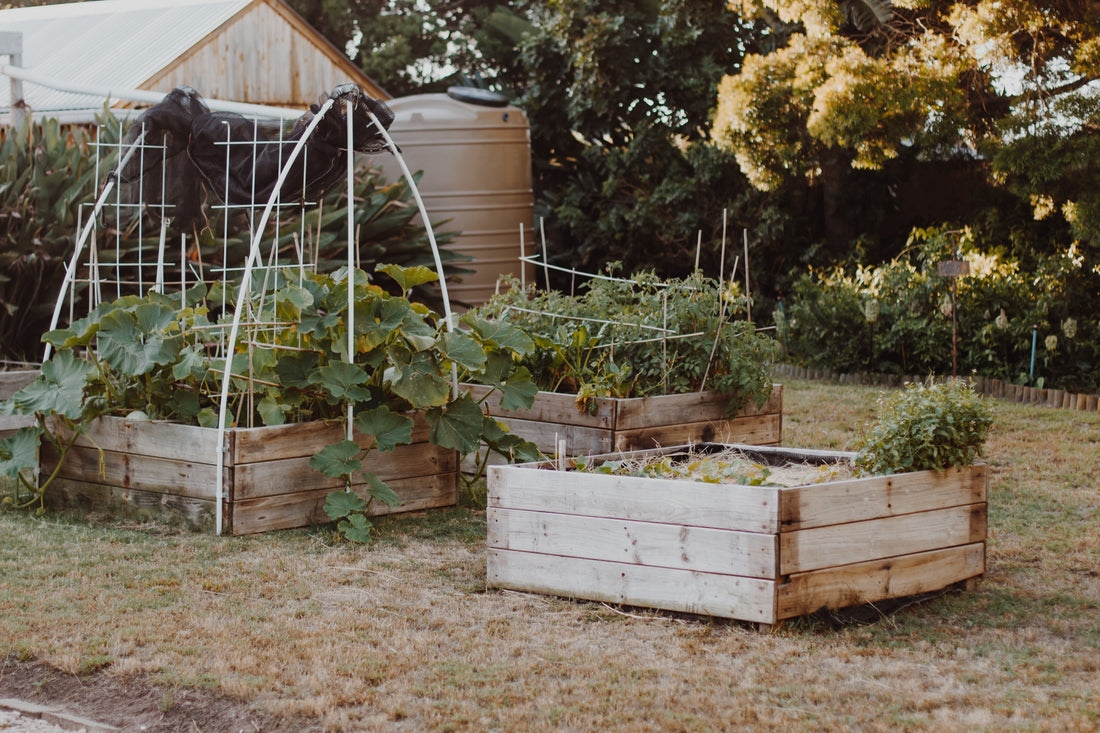Transforming a lawn into a garden creates more space for planting vegetables or flowers and reduces the environmental impact of maintaining a water-thirsty lawn. There are several methods to create a garden bed and convert your lawn into a beautiful and functional garden space.
1. Smothering Method: Cardboard or Newsprint
The smothering method is an easy and economical way to convert a lawn into a garden bed. By using cardboard or newsprint, you can effectively smother the grass and weeds beneath, creating a perfect base for your new garden.Step-by-Step Process:
- Mow the lawn or cut back weeds in the area you want to convert.
- Lay down a layer of corrugated cardboard or thick layers of newsprint over the area, overlapping the edges to prevent sunlight from reaching the grass.
- Moisten the cardboard or newsprint and secure it with earth staples or stones.
- Cover the cardboard or newsprint with a layer of mulch to hold it in place and improve the soil's fertility.
- Wait for a few weeks or months for the grass and weeds to die, and the cardboard or newsprint to decompose.
- Plant your new garden bed directly into the enriched soil.
2. Solarization: Using Clear or Black Plastic
Solarization is a technique that uses the sun's energy to heat the soil, killing weeds, pests, and pathogens. By covering your lawn with clear or black plastic, you can create a greenhouse effect that raises the soil temperature to levels that effectively kill unwanted plants.Step-by-Step Process:
- Mow the lawn or cut back weeds in the area you want to convert.
- Moisten the soil to help conduct heat more efficiently.
- Cover the area with clear or black plastic, ensuring it is tight and secure to the ground with rocks, stakes, or earth staples.
- Leave the plastic in place for several weeks, depending on the intensity of sunlight in your region.
- Remove the plastic and till or rake the dead grass and weeds to prepare the soil for planting.
- Add compost or other organic matter to enrich the soil before planting your new garden bed.
3. No-Till Garden Preparation: Top-dressing with Compost
No-till garden preparation is a method that minimizes soil disturbance and promotes healthy soil structure. By adding a layer of compost to the top of your existing lawn, you can create an ideal environment for your new garden bed without the need for tilling or digging.Step-by-Step Process:
- Mow the lawn or cut back weeds in the area you want to convert.
- Spread a 1-inch layer of compost over the lawn or weed-covered area.
- Leave the compost undisturbed for a few weeks to allow it to break down and enrich the soil.
- Plant your new garden bed directly into the enriched soil, taking care not to disturb the underlying grass and weeds too much.
4. Raised Garden Beds: Hugelkultur and Traditional Raised Beds
Raised garden beds are an excellent option for converting a lawn into a garden space without the need to remove or kill the grass beneath. Hugelkultur, a centuries-old technique, uses wood as the base for a raised bed, while traditional raised beds use a variety of materials to create an elevated planting area.Hugelkultur Raised Beds:
- Dig a trench in the area where you want to create your garden bed, removing the sod and setting it aside.
- Place logs, branches, and other woody debris in the trench to form the base of your hugelkultur bed.
- Cover the wood with layers of soil, compost, and mulch, creating a mound at least 1-2 feet high.
- Plant your new garden bed directly into the mound, allowing the decomposing wood to provide nutrients and moisture to your plants.
Traditional Raised Beds:
- Mow the lawn or cut back weeds in the area you want to convert.
- Install raised bed frames made from wood, vinyl, or other materials, ensuring a depth of at least 8-12 inches.
- Lay down a layer of cardboard or landscape fabric beneath the raised bed to smother grass and weeds.
- Fill the raised bed with a mixture of garden soil and compost, ensuring it is level and well-compacted.
- Plant your new garden bed directly into the raised bed soil.
Digging and sod cutting are traditional methods for converting a lawn into a garden bed. While these methods require more manual labor than other techniques, they can provide instant results and a clean slate for your new garden space.
Step-by-Step Process:
- Use a garden hose or rope to mark the shape of your new garden bed.
- Cut and remove the sod using a sharp shovel or a rented sod cutter. You can either dispose of the sod or replant it in another area of your yard.
- Add compost or other organic matter to the exposed soil, tilling or raking it in to improve the soil's fertility and structure.
- Edge the garden bed to prevent grass from creeping back in.
- Plant your new garden bed directly into the prepared soil.



